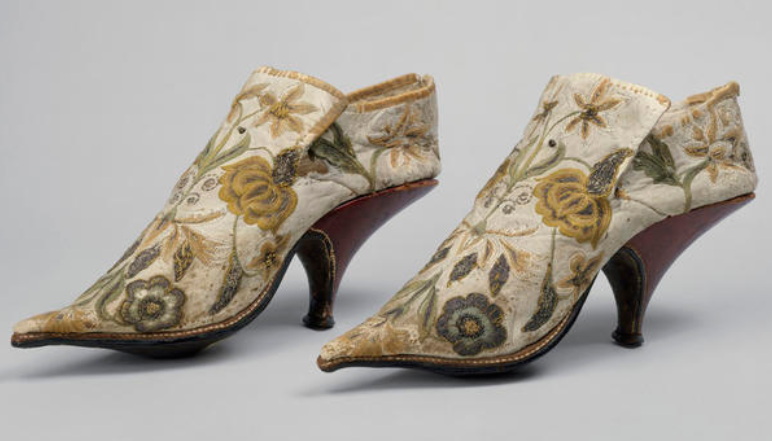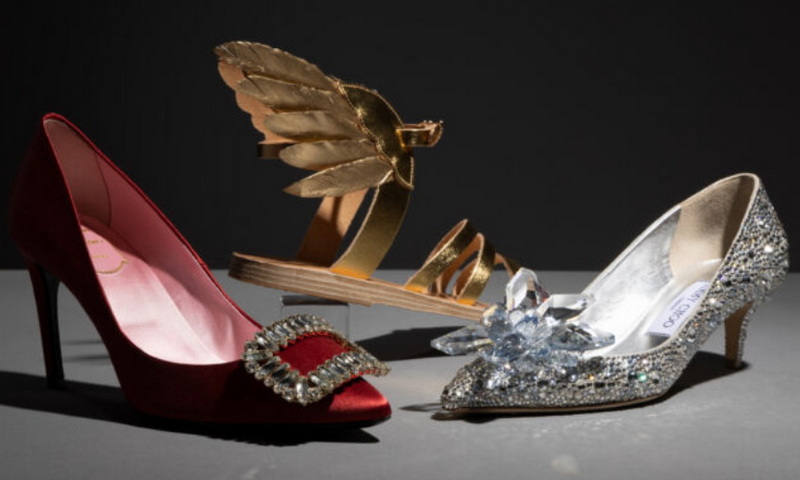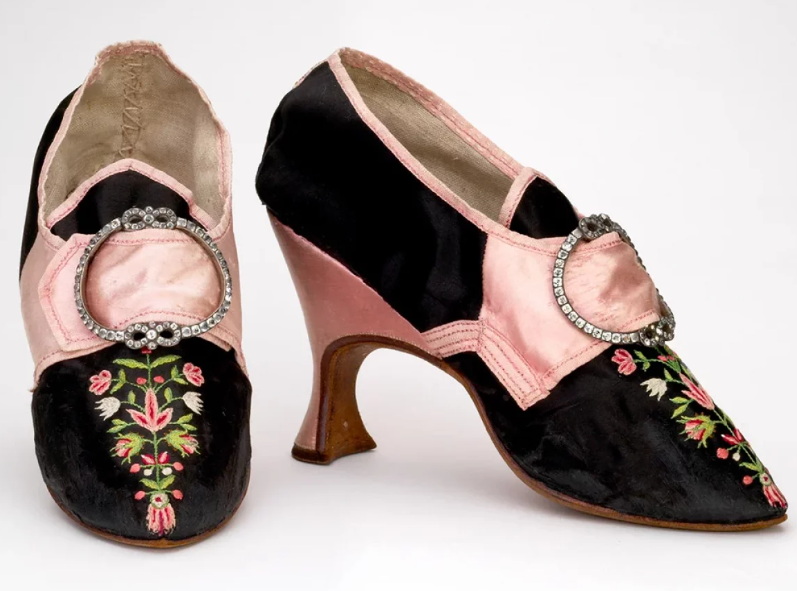Content Menu
● The Historical Roots of High Heels
>> Persian Influence
● The Introduction of High Heels to Women
>> The Role of Catherine de Medici
● The Evolution Through the Centuries
>> 17th Century: A Symbol of Status
>> 18th Century: Gender Distinction in Footwear
>> 19th Century: The Rise of Romanticism
● The Modern Era: Innovation and Style
>> World War Influence
>> Fashion Icons and High Heels
● Cultural Significance of High Heels
>> Empowerment and Femininity
>> Criticism and Comfort Concerns
● The Future of High Heels
>> Sustainable Fashion Trends
>> Technology Integration
● Conclusion
● FAQ
>> 1. What are the origins of high heel shoes?
>> 2. Who was the first woman recorded wearing high heels?
>> 3. How did high heels evolve over time?
>> 4. What impact did World War II have on high heel design?
>> 5. Are there health risks associated with wearing high heels?
● Citations:
High heel shoes have become a quintessential element of women's fashion, symbolizing elegance, sophistication, and style. However, the history of high heels is rich and complex, with origins that date back centuries. This article explores the evolution of high heels, their cultural significance, and the key figures who played a role in their development.

The Historical Roots of High Heels
High heels can be traced back to ancient civilizations. Although their exact origin is difficult to pinpoint, evidence suggests that both men and women wore heeled footwear as early as 3500 BCE in ancient Egypt. These early shoes were often made of wood or leather and served ceremonial purposes rather than practical ones.
Persian Influence
The first significant use of high heels for practical purposes emerged in the 10th century among Persian cavalrymen. These soldiers wore heeled boots to secure their feet in stirrups while riding horses. This design allowed them to maintain stability during battle, which was crucial for their survival. The popularity of these boots eventually spread to Europe, influencing fashion trends among the aristocracy.
The Introduction of High Heels to Women
Women did not adopt high heels until much later. The first recorded instance of a woman wearing high heels dates back to the mid-1500s when Catherine de Medici, the Italian noblewoman and Queen of France, wore them at her wedding to Henry II. This event marked the beginning of high heels as a fashionable item for women.
The Role of Catherine de Medici
Catherine de Medici is often credited with popularizing high heels among women in France. She was known for her love of fashion and brought various styles from Italy to the French court. Her choice to wear high heels not only made her appear taller but also set a trend that would be emulated by other women in the court.
The Evolution Through the Centuries
High heels underwent significant transformations throughout history, reflecting changes in societal norms and fashion trends.
17th Century: A Symbol of Status
By the late 1600s, high heels had become a symbol of status among both men and women. King Louis XIV of France was known for his extravagant red-heeled shoes, which indicated his royal status. During this period, men's shoes often featured chunky heels, while women began favoring more delicate styles.
High heels became associated with wealth and power during this time. The higher the heel, the more elite one appeared. This trend led to the creation of elaborate shoe designs adorned with embroidery, jewels, and intricate patterns.
18th Century: Gender Distinction in Footwear
As the 18th century progressed, high-heeled shoes began to diverge along gender lines. Men's footwear became more practical with lower heels suited for daily activities, while women's shoes became increasingly ornate and elevated. This shift reflected broader societal changes regarding gender roles and expectations.
Women's shoes were designed not just for aesthetic appeal but also to signify femininity. The delicate nature of women's footwear contrasted sharply with the sturdier designs favored by men during this period.
19th Century: The Rise of Romanticism
The 19th century saw the rise of romanticism in fashion, leading to an emphasis on femininity. High heels became associated with beauty and desirability. However, they were often impractical; some designs were so tall that women required assistance to walk.
During this era, shoe manufacturing began to industrialize, allowing for greater variety in styles and materials. The introduction of new technologies meant that shoes could be produced more efficiently and at a lower cost.

The Modern Era: Innovation and Style
The 20th century brought about significant changes in shoe design due to technological advancements and shifts in societal norms.
World War Influence
During World War I and II, material shortages led to innovations in shoe manufacturing. Heels became thinner and more structured thanks to the introduction of steel into heel design. This era also saw the emergence of iconic styles such as stilettos, which became popularized by stars like Audrey Hepburn and Marilyn Monroe.
The stiletto heel was particularly revolutionary because it allowed for a sleek silhouette without compromising height. Designers like Christian Dior played a pivotal role in popularizing this style, which remains a staple in women's fashion today.
Fashion Icons and High Heels
The influence of Hollywood cannot be understated when discussing high heels in modern fashion. Icons like Marilyn Monroe and Audrey Hepburn showcased high heels in films that defined an era. Their glamorous portrayals helped cement high heels as essential components of women's wardrobes.
In addition to film stars, fashion designers such as Manolo Blahnik and Jimmy Choo emerged in the late 20th century, creating luxurious high-heeled shoes that became synonymous with status and sophistication.
Cultural Significance of High Heels
High heels have transcended mere footwear; they embody cultural meanings that vary across different societies.
Empowerment and Femininity
For many women, wearing high heels is an expression of empowerment and confidence. They are often associated with professional attire and formal events, allowing women to project authority while maintaining an air of femininity.
The rise of feminism has also influenced perceptions around high heels. While some view them as symbols of oppression or unrealistic beauty standards, others embrace them as tools for empowerment—an assertion of personal style that defies conventional norms.
Criticism and Comfort Concerns
Despite their popularity, high heels have faced criticism for their potential health risks. Many argue that prolonged use can lead to foot problems such as bunions or plantar fasciitis. As a result, there has been a growing trend towards more comfortable shoe designs that still offer height without sacrificing well-being.
In recent years, brands have begun producing stylish yet comfortable alternatives that cater to modern sensibilities about health without compromising on aesthetics. This shift reflects an evolving understanding of how footwear impacts overall well-being.
The Future of High Heels
As we move further into the 21st century, high heel designs continue to evolve alongside changing societal norms regarding gender roles and body image.
Sustainable Fashion Trends
With growing awareness about environmental issues within fashion industries globally comes a demand for sustainable practices—this includes how shoes are designed and produced. Brands are now exploring eco-friendly materials while maintaining stylish aesthetics that cater to conscious consumers.
Technology Integration
Advancements in technology are also influencing shoe design; smart shoes equipped with features like adjustable heights or built-in comfort mechanisms are emerging on the market. These innovations aim not only at enhancing comfort but also at making high-heeled footwear more accessible for diverse lifestyles.
Conclusion
High heel shoes have a rich history that reflects broader social changes over centuries. From their origins in ancient civilizations to their modern-day status as fashion staples, high heels symbolize femininity, power, and elegance. While they continue to evolve with changing trends and technologies, their cultural significance remains profound.

FAQ
1. What are the origins of high heel shoes?
High heel shoes trace back to ancient Egypt around 3500 BCE but gained practical use among Persian cavalrymen in the 10th century before becoming fashionable among European aristocracy in the 16th century.
2. Who was the first woman recorded wearing high heels?
Catherine de Medici is credited as the first woman recorded wearing high heels at her wedding in the mid-1500s.
3. How did high heels evolve over time?
High heels evolved from practical riding boots worn by men into fashionable items for women by the late 17th century, reflecting changing societal norms regarding gender roles.
4. What impact did World War II have on high heel design?
World War II led to material shortages that prompted innovations in shoe manufacturing, resulting in thinner and more structured heel designs like stilettos.
5. Are there health risks associated with wearing high heels?
Yes, prolonged use of high heels can lead to foot problems such as bunions or plantar fasciitis; thus, comfort has become an essential consideration in modern shoe design.
Citations:
[1] https://www.thefactshop.com/fashion-facts/history-of-high-heels/
[2] https://londonrunway.co.uk/the-history-of-high-heels/
[3] https://www.wardrobeshop.com/blogs/vintage-style-fashion/history-womens-heel
[4] https://unsplash.com/s/photos/high-heel
[5] https://www.youtube.com/watch?v=hJfpeEmtZ7U
[6] https://www.charleskeith.com/tw-en/guides/heels.html
[7] https://www.shoezone.com/Blog/heels-your-questions-answered
[8] https://burjushoes.com/blogs/default-blog/the-history-of-high-heels-10-facts-that-surprise-you
[9] https://shoefairyofficial.com/blogs/news/the-history-of-high-heels-10-facts-that-surprise-you
[10] https://en.wikipedia.org/wiki/High_heels

















